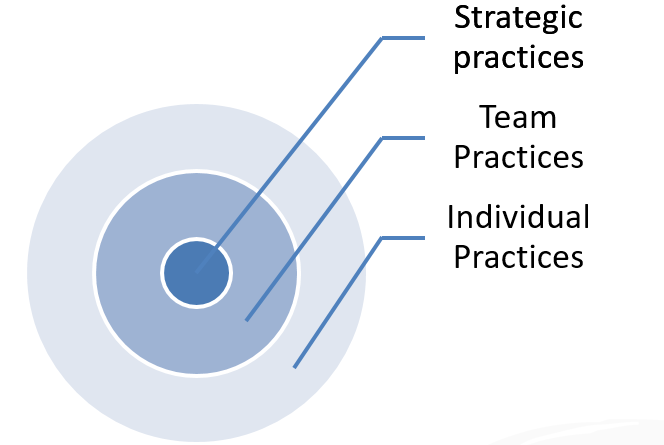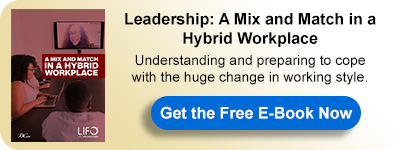How Leaders Can Handle Hybrid Workforce - Team Practices
How leaders can handle a Hybrid Workforce from the perspective of team.

Team Practices
Communicate extensively
As part of a hybrid works either from home or even a different country, thorough communication is vital. Working away from the office is comfortable for employees, yet it sparks anxiety and guilt as employees might feel left out, not knowing what is going on in the office. Strive to communicate thoughtfully, anticipate concerns, deliver reassurance instead of skepticism, and provide regular internal updates. Likewise, as a cohesive team, do not forget to celebrate corporate and personnel triumphs. This will go a long way toward fostering teamwork and encouraging people to do more together.1
Set Expectations, Roles, and Responsibilities
Roles and responsibilities must also be clearly defined when managing a hybrid workforce. More than full-time workers, freelancers require separate tasks to complete under the supervision of an accessible manager. They should be able to ask inquiries readily and obtain answers. They should also be aware of what they are responsible for and the expectations for various assignments.
Roles and responsibilities must also be clearly defined when managing a hybrid workforce. More than full-time workers, freelancers require separate tasks to complete under the supervision of an accessible manager. They should be able to ask inquiries readily and obtain answers. They should also be aware of what they are responsible for and the expectations for various assignments. To maximize freelancers' potential, ask them what types of work they enjoy and under what arrangements they prefer to work. When you can, accommodate their preferences because their success is ultimately your organization's success, and your success is your clients' success.2
Provide Ongoing Coaching and Feedback
After clarifying roles, responsibilities, and expectations, it is essential to provide ongoing coaching and feedback regarding team performance. You might wonder how you and your team benefit from ongoing coaching in a hybrid workplace, where team members are not always present on site. Therefore, LIFO provides an essential Digital Strengths-Based feedback tool, which is the E-feedback Charts. It is a feedback tool centered on the strengths you see in yourself and reinforced by how others view your strengths in relation to them; it includes observed strengths and strengths to use more of or less. Provides a visual reference for confirmation and a way for groups to appreciate and acknowledge the differences in one another. Among what is unique about this tool is it's a digital tool, making it easy to keep supporting teams through their development over an extended period.
Moreover, the team shares Strengths-Based feedback using three developmental strategies (Confirming, Extending, and Moderating). In addition, the tool provides an entire developmental system since it helps employees play to their strengths and realize their potential through the E-feedback Charts. The measurable survey is re-taken after a certain period and judged by the LIFO practitioner and coach. They continuously support team members, whether individually or collectively, to use the E-feedback provided.3 This tool is highly beneficial for a hybrid workplace, allowing teams to connect, communicate, offer each other feedback, and see each other in reference to themselves. The LIFO Strengths-Based E-Feedback charts keep teams on track of communication, coaching, and progress.
Build Bridges!
In Life Orientations, a significant growth strategy called Bridging (Build Relations) helps us recognize and overcome our "blindness" to the differences in the needs and values of others. It also helps us better understand other people's "inner reality" and helps us stop presuming that we know what is suitable for others and their needs. It's about Strengthening your relationships with others by matching your approach to their most preferred orientation. You might question whether this whole situation of a hybrid workplace and such hectic times is suitable for building relations? And the answer is a resounding Yes! It is the best time to empathize with others, understand their needs, and acknowledge that what might suit us might not fit them. It is an excellent chance to verify others' needs and seek knowledge about them. Seeing others and their needs in clear light is what the concept of Bridging is about.4
1Forbes, July 2021, Maura FitzGerald, How to effectively manage a hybrid workforce, Accessed 29 September 2021, https://www.forbes.com/sites/forbesagencycouncil/2021/07/22/how-to-effectively-manage-a-hybrid-workforce/?sh=7f489d356c83
2Forbes, July 2021, Maura FitzGerald, How to effectively manage a hybrid workforce, Accessed 29 September 2021, https://www.forbes.com/sites/forbesagencycouncil/2021/07/22/how-to-effectively-manage-a-hybrid-workforce/?sh=7f489d356c83
3 LIFO Efeedback Charts, March 2021
4 LIFO, The Name of Your Game
For more about this topic, download our latest book "Leadership: A Mix and Match in a Hybrid Workplace" for FREE:
